PICK OF THE MONTH
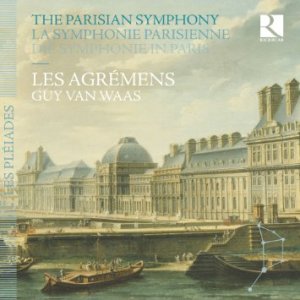 Various Composers
Various Composers
The Parisian Symphony (7 discs)
Les Agrémens / Guy Van Waas
Ricercar (dist. Naxos)
RIC 357
Once again, the Ricercar label comes through with an exquisite super-budget box set. This one calls for a bit more explanation than most, however. It features orchestral works by 13 composers including Grétry, Gossec, Stamitz, and Méhul; however, the title refers not only to symphonies as the word is commonly understood today, but also to large-scale works that fit under the much broader umbrella of meaning that existed for that term in the 18th century: there are theatrical suites (including some vocal arias), concertos, sinfonias concertantes, and full-blown classical symphonies. These composers came from all over Europe, but all were active in Paris at the times that these works were written. This collection consists of recordings made by the Belgian ensemble Les Agrémens between 2003 and 2014, but some of the performances are previously unreleased; the playing is superb, as is the sound quality, and the package includes extensive liner notes that appear to have been written specifically for this release. I can’t say enough about the pleasures this box offers, and all libraries should seriously consider picking it up.
CLASSICAL
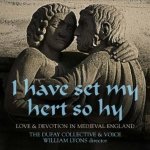 Various Composers
Various Composers
I Have Set My Hert So Hy: Love & Devotion in Medieval England
Dufay Collective; Voice / William Lyons
Avie (dist. Allegro)
AV2286
This is a very interesting and enjoyable collection of secular and sacred songs from late-medieval England, all of them settings of vernacular poems, some of them set to melodies of the period and some with music written by the Dufay Collective’s William Lyons. A few of these songs (particularly the Christmas-themed ones) will be familiar to fans of early music, but most are quite obscure. The arrangements are lovely, and the ones that feature original music by Lyons offer a nice blend of modern originality and period appropriateness. Recommended.
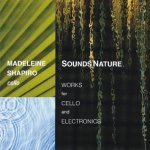 Various Composers
Various Composers
Sounds Nature: Works for Cello and Electronics
Madeleine Shapiro
Albany
Troy1577
Rick’s Pick
Back in the early days of synthesizers, a common critique was that they would never be able to sound completely like “real” instruments. But it always seemed to me that what made synthesizers exciting was not their ability to imitate acoustic instruments, but their ability to make sounds that nothing else could make. Here’s another example of an exciting thing they can do: interact directly with acoustic instruments, sometimes absorbing sonic input and responding with sounds of their own, sometimes creating a backdrop for the live musician, sometimes providing one or more contrapuntal threads in the fabric of the piece. All kinds of interactions are going on here with this fascinating collection of pieces for cello and electronics; featured composers include Morton Subotnick, Judith Shatin, Matthew Burtner, Tom Williams, and Gayle Young. Cellist Madeleine Shapiro is marvelous. Highly recommended to all new music collections.
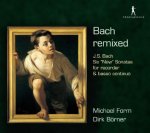 Johann Sebastian Bach
Johann Sebastian Bach
Bach Remixed
Michael Form; Dirk Börner
Pan Classics (dist. Naxos)
PC 10299
The cute title of this album will disturb some potential listeners and excite others, but be comforted/disappointed — this is a not a collection of club and EDM remixes of works by Bach. It’s a collection of Bach pieces originally written for orchestra or keyboard, here arranged for recorder and harpsichord. We have an overture, a couple of sonatas, a partita, one of the orchestral suites, all of them expertly reimagined and beautifully played. Libraries supporting coursework in orchestration and arrangement should take particular note of this lovely recording.
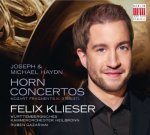 Franz Joseph Haydn; Michael Haydn; Wolfgang Amadeus Mozart
Franz Joseph Haydn; Michael Haydn; Wolfgang Amadeus Mozart
Horn Concertos
Felix Klieser; Württembergisches Kammerorchester Heilbronn / Ruben Gazarian
Berlin Classics (dist. Naxos)
0300647BC
Rick’s Pick
Haydn’s and Mozart’s horn concertos are relatively familiar pieces, but what makes this recording special — in addition to the very fine playing by hornist Felix Klieser and the delicate-toned Württembergisches Kammerorchester Heilbron (all playing on modern instruments) is the inclusion of a concertino for horn and orchestra by Joseph Haydn’s younger brother Michael, a pure genius of the classical idiom whose work is finally beginning to get the recognition it has long deserved. Oh, and I suppose it’s also worth noting that Klieser has no arms and plays the horn with his left foot. Don’t pass this one up.
 Various Composers
Various Composers
Fugue State
Alan Feinberg
Steinway & Sons (dist. Naxos)
30034
The fugue is one of the most foundational compositional structures of Western classical music, and while Bach is usually the first name that comes to mind when discussing fugal writing, he’s hardly the only great composer of fugue-based pieces, even during the baroque period. This collection features fugues written by Bach, Handel, Scarlatti (both of them), Buxtehude, and Froberger, and they vary in mood from the dark and contemplative to the playful and sparkling. Feinberg plays on a Steinway grand (naturally, given the record label), and makes personalized but tasteful use of the instrument’s capabilities.
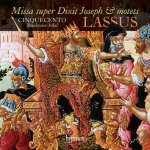 Orlande de Lassus
Orlande de Lassus
Missa super Dixit Joseph & Motets
Cinquecento
Hyperion (dist. Harmonia Mundi)
CDA68064
No less an authority than Michael Praetorius reportedly said that Orlande de Lassus was the only composer who wrote motets the “right” way. One might agree or disagree with that assessment (I’d argue that Palestrina and Willaert each wrote a pretty good motet or two in their day), but there’s no question that Lassus’ motets are exceptionally fine, and the parody Mass he wrote using thematic material from the motet “Dixit Joseph undecim fratribus suis” is also a gem, and is performed sweetly and convincingly here by the all-male Cinquecento ensemble.
 Johann Nepomuk Hummel
Johann Nepomuk Hummel
Sonaten & Variationen
Linde Brunmayr-Tutz; Jaap ter Linden; Bart van Oort
Fra Bernardo (dist. Naxos)
FB 1502793
Rick’s Pick
The period when the high classical tradition began to soften and expand into what would become the Romantic style is one of exquisite tension and musical richness. Some of the most affecting pieces in the history of European art music were written during this period, and some of the best of them were written by Johann Nepomuk Hummel. Here a trio consisting of flutist Linde Brunmayr-Tutz, cellist Jaap ter Linden, and fortepianist Bart van Oort performs four of Hummel’s chamber works for combinations of those instruments; the pieces are achingly beautiful examples of late classical/early Romantic composition, and the playing is utterly superb. Highly recommended to all classical collections.
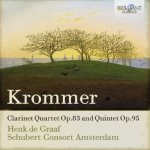 Franz Krommer
Franz Krommer
Clarinet Quartet Op. 83 and Quintet Op. 95
Henk de Graaf; Schubert Consort Amsterdam
Brilliant Classics (dist. Naxos)
95040
Another important figure in the classical-to-Romantic transition period was Franz Krommer, who was about 20 years younger than Hummel and whose work looks forward to that transition more than it exemplifies it. He flourished at a time when the clarinet itself was also flourishing in popularity, and he wrote for the instrument extensively and well. For this disc, clarinetist Henk de Graaf and members of Schubert Consort Amsterdam (playing modern instruments) perform one of Krommer’s clarinet quartets and one quintet (the latter scored, rather unusually, for clarinet, violin, two violas, and cello). Very, very nice.
JAZZ
 Eberhard Weber
Eberhard Weber
Encore
ECM
2439
Encore is an aptly-titled compilation of live recordings made by bassist Eberhard Weber between 1990 and 2007, some in collaboration with flugelhorn player Ack van Rooyen. Some (or perhaps all; it’s not entirely clear) originated as solos he played during shows with the Jan Garbarek Group. If the thought of an entire album of bass solos makes you tired, consider the fact that Weber is not your typical bass player; he uses loops and electronic effects to expand greatly the sonic range of his instrument and his capacity to create lines and textures, and the result is both technically fascinating and aurally engaging.
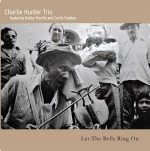 Charlie Hunter Trio
Charlie Hunter Trio
Let the Bells Ring On
Charlie Hunter Music
No cat. no.
This is no conventional jazz trio, partly because of its instrumentation — 7-string guitar, trombone, drums — and partly because of the range and backgrounds of the musicians. Charlie Hunter has deep experience in avant-funk-jazz, while trombonist Curtis Fowlkes and drummer Bobby Previte were mainstays of New York’s experimental downtown scene during its 1970s heyday. Between the three of them, this group is conversant in just about every dialect of the musical American vernacular, and you hear just about every one of them at some point during this album. Highly recommended.
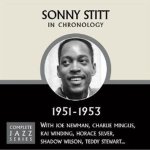 Sonny Stitt
Sonny Stitt
1951-1953
Classics (dist. Albany)
1378
Rick’s Pick
Continuing its ongoing series documenting the recording career of saxophonist Sonny Stitt, the French Classics label here collects small- and large-ensemble recordings made by Stitt between 1951 and 1953. The sound quality is very good, and the performances are consistently marvelous (even when the quality of the musical content falters a bit, as it does on the six Prestige sides collected here). Ugly and sloppily laid-out packaging continues to be a problem with this series, but the quality of the music is so compelling that it’s easy to overlook the visual aesthetics. A must for every jazz collection.
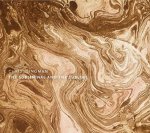 Chris Dingman
Chris Dingman
The Subliminal and the Sublime
Inner Arts Initiative
IAI001
If you’re a fan of ECM jazz, then you’ll be sure to love this very well-titled effort by vibraphonist and composer Chris Dingman. Although the ensemble makeup (vibes, sax, guitar, piano trio) says “straight-ahead jazz,” the music is something very different: floating, impressionistic, often effectively arrhythmic. For a better idea of what to expect, consult the Buddhist epigram printed on the inside tray: “Learn this from the waters: in mountains and chasms, loud gush the streamlets, but great rivers flow silently.” This is music that flows rather than swings, and while I don’t know if it can meaningfully be characterized as “jazz,” it’s certainly very, very lovely.
 Sam Most
Sam Most
From the Attic of My Mind (reissue)
Elemental Music/The Orchard
906074
Rick’s Pick
Ignore (if you can) the painfully hippy-dippy cover photo: this is soulful, swinging, straight-ahead jazz by one of the best and most influential flutists in the genre. Leading a quintet that includes pianist Kenny Barron and bassist George Mraz, Most presents an all-original program that beautifully showcases his warm, woody tone and his winning way with a melody. The set was recorded in 1978 and sounds great on this remastered reissue. (It’s worth noting that this is one of six releases in the Xanadu Master Edition series of reissues by the Elemental Music label — others include recordings by Jimmy Heath, Albert Heath, Al Cohn and Jimmy Rowles, Barry Harris, and Al Cohn and Billy Mitchell. All are strong candidates for library collections.)
FOLK/COUNTRY
 Karrnnel Sawitsky & Daniel Koulack
Karrnnel Sawitsky & Daniel Koulack
Fiddle & Banjo: Tunes from the North, Songs from the South
Self-released
KO5green300
Rick’s Pick
The “north” in this title is Canada; the “south” is the southeastern US. The fiddler is Karrnnel Sawitsky and the banjo player is Daniel Koulack, both from Canada, and the program they present here is a completely charming blend of instrumental tunes that draw from both Stateside and Canadian traditions along with songs from both the Euro-American Appalachian (“Little Birdie,” “Groundhog”) and African-American (“How Does a Poor Man Stand Such Times and Live,” “Killin’ Floor”) repertoires. A few original compositions are snuck into the mix as well. Guest vocalist Joey Landreth delivers the lyrics in a warm and attractively grainy voice and contributes some slide guitar as well. Highly recommended to all libraries.
 Vishtèn
Vishtèn
Terre Rouge
Les Editions du Corfus
PTVish05
For a very different, but equally fun and interesting, take on Canadian folk music, consider the latest album from Vishtèn, an acoustic trio based on Prince Edward Island. Although PEI is known mainly for the quality of its Scottish fiddling, these guys come from the French-speaking communities of Maritime Canada, and the songs and tunes they perform here reflect that deeply. In fact, on a couple of songs you’ll swear you hear strong echoes of South Louisiana, where the group’s Acadian ancestors settled in the 19th century. The songs are wonderful, but my favorite tracks are the Québécois-flavored fiddle tunes. The whole album is a joy.
 Jim Campilongo & Honeyfingers
Jim Campilongo & Honeyfingers
Last Night, This Morning
Blue Hen
BHE52
The Fender Telecaster is a guitar with a culture all its own. Hotshot guitarists known and celebrated as Tele specialists have included Redd Volkaert, Albert Lee, James Burton, and of course the legendary Danny Gatton — and Jim Campilongo. The Tele is known particularly for its twanginess, and perhaps for that reason its adepts (regardless of their putative genre orientation) seem always to gravitate in the direction of country music. On this album, a retrospective of sorts on which he revisits tunes from his 20-year recording career, Campilongo makes all the noises you expect from a Tele guy, but gives everything his own sly and often humorous edge. Though everything here sounds pretty dang country, listen closely and you’ll hear hints of Gypsy jazz, Neapolitan love songs, and surf rock. This album is that rarest of things: a guitar album that non-guitarists will enjoy.
 The Railsplitters
The Railsplitters
The Faster It Goes
Self-released
No cat. no.
This band’s bluegrass instrumentation kind of forces me to put them in the Folk/Country category, but at the same time I feel kind of dumb doing so: their music has little or nothing to do with bluegrass. Sometimes it’s jazzy, sometimes it’s torchy, sometimes it’s honky tonky, sometimes it reminds me of Lake Street Dive, sometimes it’s funky in the feathery New Acoustic way that the David Grisman Quintet used to be funky. Vocal harmonies are pervasive and incredibly tight, and if pure singalong hooks are a bit thin on the ground, there’s not an unenjoyable track here. And the last one, startlingly, is straight-up bluegrass.
ROCK/POP
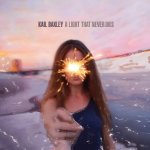 KaiL Baxley
KaiL Baxley
A Light That Never Dies
Forty Below
FBR 009
Imagine if Teddy Thompson had been raised by Wilson Pickett rather than by Richard Thompson, and that might give you a good sense of what KaiL Baxley (I’m afraid that’s no typo) sounds like on his sophomore album, a soulful R&B burner complete with Memphis-style horns, blues harmonica, heartbreak ballads in 12/8, and subtly-wielded hip hop beats. The centerpiece at all times is Baxley’s sultry-but-chesty voice, a voice that sometimes sounds like a parody of a Vintage Soul Man but never fails to engage. The songwriting is consistently strong, and when he hits you with a perfect hook you feel it all the way down to the bone.
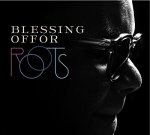 Blessing Offor
Blessing Offor
Roots
Sojourn
SR-049
Rick’s Pick
Speaking of soulful, here is the debut album from singer/songwriter Blessing Offor, a young man who was born in Nigeria but raised in the United States following a series of childhood misfortunes that left him blind. On Roots he sounds, coincidentally enough, a little bit like Stevie Wonder, singing in a near-falsetto style over instrumental backing that could have been recorded at Motown circa 1975. The music is funky and pop-smart, the hooks sharp but understated, and Offor’s keyboard style is inventive but light and self-effacing. His voice goes just slightly flat sometimes, but not enough to detract from the significant pleasures of this great album.
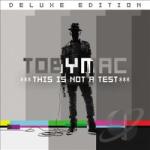 tobyMac
tobyMac
This Is Not a Test
Forefront/Capitol
002297502
If Christian pop music has an equivalent to Justin Timberlake, it’s tobyMac (no, that’s not a typo either), who, like Timberlake, got his start as part of a popular boy band and has since gone on to even more success as a solo artist drawing on all manner of funk, hip hop, club and pop styles. His talent is on a level to Timberlake’s as well, and his albums are a consistent pleasure. This Is Not a Test is no exception, and unless you have a constitutional aversion to lyrical invocations of Jesus’ name it’s hard to imagine this album failing to get you up out of your seat, bopping and waving your hands and singing along with the choruses.
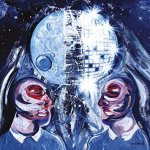 The Orb
The Orb
Moonbuilding
Kompakt
124
This is the group that basically invented ambient house music (remember “Little Fluffy Clouds“?), and 25 years later there’s still no one that does it better. Moonbuilding is a four-track, 50-minute odyssey with a science fiction theme. Average track length is around 12 minutes, giving the guys plenty of room to build each one slowly and define plenty of aural space before kicking in the gentle thump of its trademarked beats. That they manage to evoke the vast emptiness of space while still keeping the overall feel warm and organic is quite an achievement — but then, they’ve been doing this for a while.
 Voices from the Lake
Voices from the Lake
Live at MAXXI
Editions MEgo (dist. Forced Exposure)
EMEGO 209
Rick’s Pick
For a much darker, more troubled, and less beat-focused take on the ambient/drone tradition, here’s a live set from Italian techno artists Donato Dozzy and Neel. The music is billed as “ambient techno,” but it’s much more the former than the latter, and if ambient music is usually designed to soothe and comfort, well, this is something different. This is ambient music that makes me think of technological space junk falling into the ocean and sinking into the cold depths, or of a crowd of people in a dark, rainswept alley having a muttered discussion about whether or not to start a small riot. Your mental images may vary.
WORLD/ETHNIC
 Dubbest
Dubbest
Light Flashes
Self-released
DBBST003
Rick’s Pick
This Boston-based roots reggae ensemble is making some of the finest vintage-style reggae in the world right now. The secret to their sound is the contrast between the heavyweight rhythms and the heavenly lightness of singer Ryan Thaxter’s voice — well, that and the band’s ability to put at least one completely irresistible melodic hook into almost every song. (If you think that’s easy to do, try it.) The richly dubwise production by Craig “Dubfader” Welsch puts the ganja-flavored final touch on what is an exceptionally fine album.
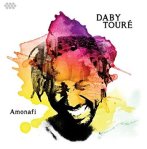 Daby Touré
Daby Touré
Amonafi
Cumbancha
CMB-CD-35
Rick’s Pick
Some writers are comparing him to both Cat Stevens and Nick Drake, but I don’t hear it: he’s much more interesting than Cat Stevens ever was, and a lot happier than Nick Drake. That said, if you love Afro-European fusion sounds, songs that are gentle but propulsive, and melodies that burrow unnoticed under your skin and stay there, then definitely check this out. Notice, too, that there are some serious and heartfelt protest lyrics here, though since they’re sung in Wolof most listeners will have to read the liner notes to discern the politics lurking beneath those sneakily hooky and gentle-but-propulsive melodies. Highly recommended to all libraries.
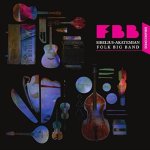 Sibelius-Akatemian Folk Big Band
Sibelius-Akatemian Folk Big Band
FBB
Siba
SRCD-1012
At first you see the phrase “folk big band” and you’re a little bit startled. Then you stop and ask yourself why. Then you decide it’s because folk music is supposed to be spontaneous, flexible, small-scale, not orchestrated. Then you shrug and give this album of Finnish folk music arranged for 40-member ensemble of singers and instrumentalists a spin, and find yourself being drawn in by both the tunes and the arrangements. By about halfway through you may find yourself wishing everything was just a bit more spontaneous, flexible, etc., but not enough to stop listening and enjoying.
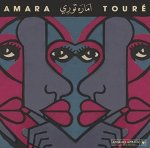 Amara Touré
Amara Touré
1973-1980 (reissue)
Analog Africa (dist. Forced Exposure)
AACD 078
Some time ago I had some East African dance music playing on the stereo (from Tanzania, I think) and one of my kids said “Dad, how is this not Latin music?” She was right, of course; if you didn’t know otherwise, you could easily hear soukous and African rumba as Cuban music. Same thing in Senegal, on the other side of the continent, where throughout the mid-20th century dance bands were gleefully combining Cuban son montuno and patchanga with local folk music styles. Percussionist and singer Amara Touré was one of the leading lights of this movement, and although he recorded very little (his entire oeuvre is presented here), the album that collated all of those recordings was very influential upon its original release in 1980. This CD marks that music’s welcome return to the market, and it should be snapped up by any library collecting in Latin or world music.